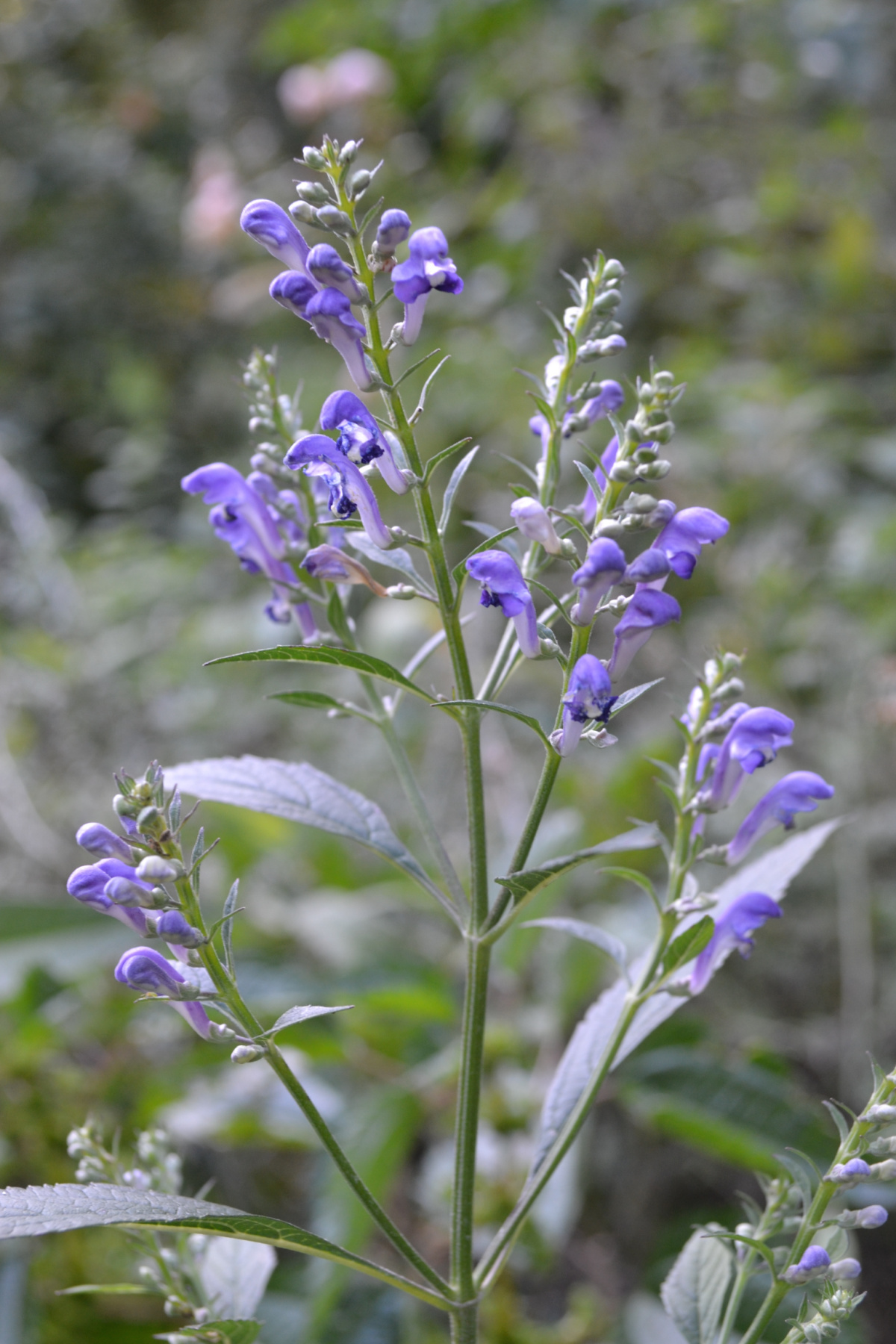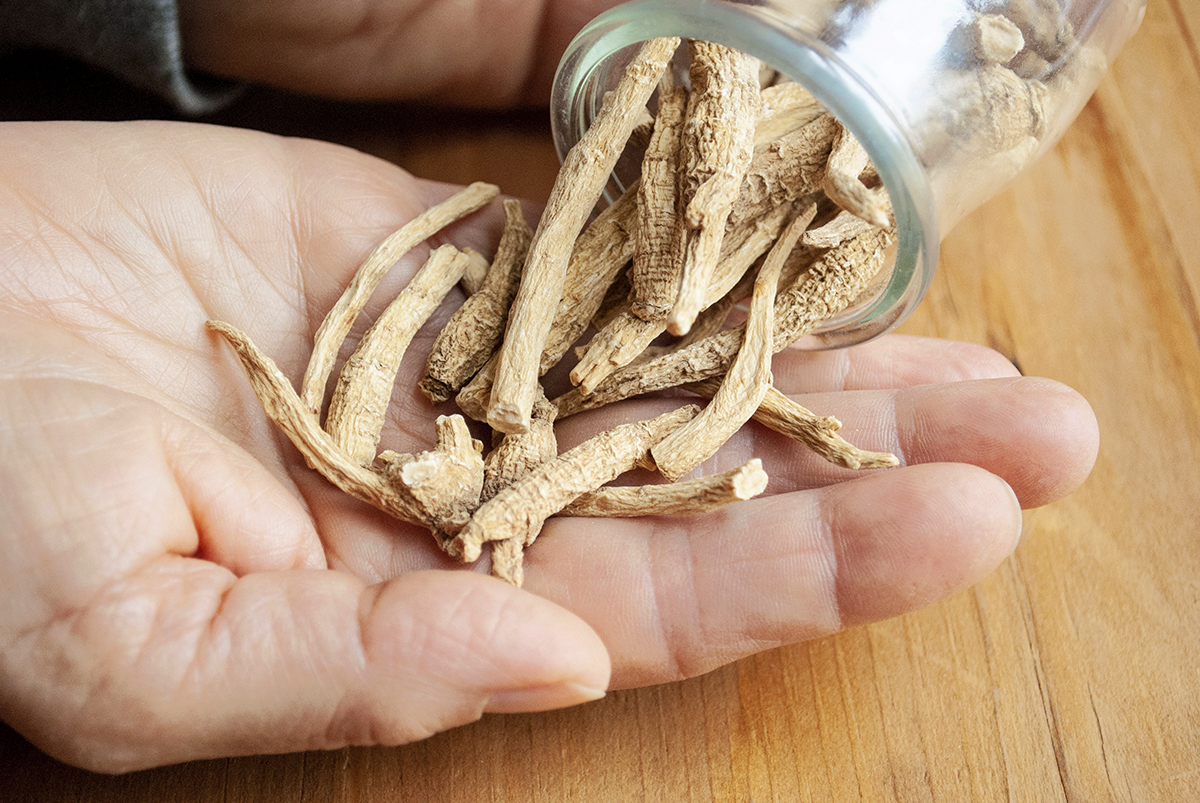
Herbs and Yoga: How Plant Wisdom Can Support Your Yoga Practice
Yoga has come to mean many things to many people. An ancient practice designed to serve as a path to self-liberation, there are almost as many approaches to yoga as there are people practicing. The practice of yoga asana (yoga postures) offers immense benefits—physical, physiological, and psychological. However, cultivating a nourishing yoga practice that stands the test of time isn’t just about what you do on the mat. How you act and care for yourself outside of your dedicated yoga practice has a huge impact. The topic of herbs and yoga is a fascinating one with historical significance. This article will touch upon how ancient yogic philosophy references herbs and yoga and will offer some practical guidelines and food for thought as to how plant wisdom can support the yoga practice of the modern day practitioner.

Pathways to Liberation
Yoga sutra IV.I of Patanjali’s Yoga Sutras states:
“Janmauṣadhi-mantra-tapaḥ-samādhi-jāḥ siddhayaḥ”
Modern yoga scholar Edwin Bryant (2009) translates this sutra as, “The mystic powers arise due to birth, herbs, mantras, the performance of austerity, and samadhi” (p. 406). Another translation by yoga master B.K.S. Iyengar (1993): “Accomplishments may be attained through birth, the use of herbs, incantations, self-discipline, or samadhi [profound meditation/absorption]” (p. 230). The mystic powers spoken of are the siddhis, or powers attained by the practice of yoga. Such powers include things like being able to make oneself light as cotton fiber, rendering oneself invisible, knowing the minds of others, and having knowledge of one’s previous lives (Iyengar, 1993). However, according to the Yoga Sutras of Patanjali, the aspirant is cautioned not to get distracted by these supernatural powers. They are simply signposts that one is on the right track, and it is advisable to continue the practice with humility and dedication, lest one get caught up in the complications that come with the unwise or unethical use of power.
Furthermore, going back to this intriguing sutra, we don’t know exactly which herbs are referenced, but given the context, they are likely psychoactive herbs. This article will not address psychoactive herbs or mystic powers, but rather how everyday herbs can support one’s yoga practice by nourishing the health of the body and mind—so that one can engage in the discipline and hard work that is involved in maintaining a yoga practice. One of my teachers, Swati Chanchani says, “If there is a lifestyle for yoga it’s Ayurveda.” In this post, I will address herbs not as a means for attaining a supernatural state or cultivating mystic powers but as a way of caring for the body and mind so that one can practice yoga with fewer obstacles. Therefore, my approach is an ayurvedic one—caring for the body through diet, lifestyle, and the use of herbs—so that one’s potential in yoga is maximized.
A Nourishing And Illuminative Practice
In his commentary on yoga sutra II.46, sthira sukham asanam, “Asana is perfect firmness of body, steadiness of intelligence, and benevolence of spirit” B.K.S. Iyengar (1993) mentions that “Performance of the asana should be nourishing and illuminative” (p. 149). In addition to practicing yoga in a way that is nourishing and illuminative, we benefit from engaging in lifestyle practices that offer strength and support lightness of being.
One definition of yoga is the stilling of fluctuations of thought or “the stilling of the changing states of the mind” (Bryant, 2009, p. 10). Which herbs support a steady mind? Here are a few herbs that can work with your yoga practice in a complementary fashion by way of nervous system support. This is by no means an exhaustive list but rather a short list of ideas to get you started.

Skullcap (Scutellaria lateriflora) aerial parts
Skullcap is a cool, bitter herb with a calming, clarifying, and purifying effect on the mind. Due to its cool nature, it is particularly helpful for soothing imbalances of a pitta nature, such as an overactive, aggravated mind. If anger, impatience, or the stresses of the day are pulling at you, skullcap is a good choice. Calming and clearing the mind with nervine herbs such as skullcap can help you shelve your worries at least for a bit, making it more possible to sink into your yoga practice. Of course, yoga itself is a wonderful practice for cultivating a calm, clear, grounded state. However, herbal supports can assist in finding that steady, quiet internal space.
Skullcap works well as an infusion or tincture and though it is calming it is not strongly sedating so can be taken during the day. For a more nourishing, tonifying effect you can combine skullcap with strengthening herbs such as ashwagandha (Withania somnifera) root. The suggested dose for skullcap is 1-9 grams per day (Dass, 2013).

Gotu kola (Centella asiatica) aboveground parts
Gotu kola is another cooling herb that is helpful for a tired or overheated mind. However, it is a bit more tonifying than skullcap. Though gotu kola soothes stress and promotes sound sleep, like skullcap, its sedative effects are not so pronounced that it will interfere with wakefulness and daytime activities, such as work, studies, or your yoga practice; gotu kola has a cooling, calming, nourishing effect on the mind and can be enjoyed any time of day. This herb may be taken as a powder, capsule, tincture, or infused in ghee for an especially nutritive effect. The suggested dosage is generous, ranging from 3-30 grams per day (Dass, 2013).
Gotu kola is also known to support memory and is thus an aid for students and those tasked with retaining large amounts of intellectual information. Though it is cooling, gotu kola can be combined with warming herbs such as ashwagandha or calamus (Acorus calamus) for energetic balance. It is said to promote memory, intelligence, and longevity and it is considered a sattvic (pure/clarifying) herb (Dass, 2013; Frawley & Lad, 2001). In yoga, the aim is to cultivate a sattvic state of being—a state that is luminous and free from aggression, greed, and agitation. Herbs such as gotu kola, skullcap, tulsi (Ocimum tenuiflorum), rose (Rosa spp.), and hibiscus (Hibiscus sabdariffa)—as well as foods that are light, fresh, and wholesome—help support this sattvic state. By keeping your mind fresh and clear, there will be fewer distractions vying for your attention when you commence your yoga practice.

Herbs for Strength
The physical aspect of yoga is indeed just one element of the practice and by no means the most important. However, the health of the body has an impact on the health of the mind, and giving your body the tools it needs to stay strong and nourished will make a difference in your yoga practice—physically, mentally, and emotionally.
Rasayanas are a category of herbs in Ayurveda that nourish and rejuvenate all the tissues of the body. Ayurvedic practitioner and author Vishnu Dass (2013) explains “Rasayana literally means ‘to enter the rasa,’ the water element of the body (plasma and lymph) with which all tissues are bathed and nourished” (p. 88). Examples include ashwagandha, shatavari (Asparagus racemosus), saffron (Crocus sativus), bacopa (Bacopa monnieri), gotu kola, ginseng (Panax ginseng), licorice (Glycyrrhiza glabra), amalaki (Emblica officinalis), haritaki (Terminalia chebula), and foods such as warm milk and sesame seeds. Many rasayanas are considered adaptogens in Western herbalism. Since yoga is a practice that requires both physical and mental stamina, staying nourished with rasayanas is a benefit to one’s practice and these herbs will support your overall endurance, resilience, and well-being.
Enjoying these nourishing herbs mixed into food is a nice way to optimize their nutritive effects, such as with these sunbutter energy balls.

8 ounces sunflower butter (or substitute nut butter of choice)Rejuvenating Sunbutter Energy Balls
Sweet, nutty, and satisfying, these little energy balls are easy to make and easy to enjoy! Eat one or two as a snack or treat. They are perfect for recovering from physical activity, such as a rigorous yoga practice, and will help hold you over to the next meal. However, they tend to soften at room temperature, so best to keep them refrigerated until they are ready to eat.
¼ cup honey
1 tablespoon rasayana herbs, ground (choose from ashwagandha, shatavari, gotu kola, bacopa, or other nourishing herbs found in ground, powdered form)
½ cup rolled oats
¾ cup raisins
½ teaspoon vanilla (Vanilla planifolia) bean extract
Pinch of salt
Dash of cinnamon (Cinnamomum spp.)
To Use:
Store in the freezer or fridge and enjoy 1-2 sunbutter energy balls as a snack or treat.
In Closing,
There are many ways in which engaging with plant wisdom can work synergistically with your yoga practice. As we become more sensitive and attuned to how we fit in with the natural world, including the plant kingdom, we increase our intuitive understanding of how plants and herbs can support us in the practice of yoga—on and off the mat. Herbs can support balance in our bodies and minds, helping to quiet distractions and giving us the strength to engage in deeper practices such as yoga.

REFERENCES
Dass, V. (2013). Ayurvedic herbology East & West. Lotus Press.
Frawley, D., & Lad, V. (2001). The yoga of herbs (2nd ed.). Lotus Press.
Patañjali. (2009). The yoga sutras of Patañjali (E. Bryant, Trans.). (Original work published ca. 500-200 BCE). North Point Press.
Patañjali. (1993). The yoga sutras of Patañjali (B.K.S. Iyengar, Trans.). (Original work published ca. 500-200 BCE). Harper Collins Publishers.aj









